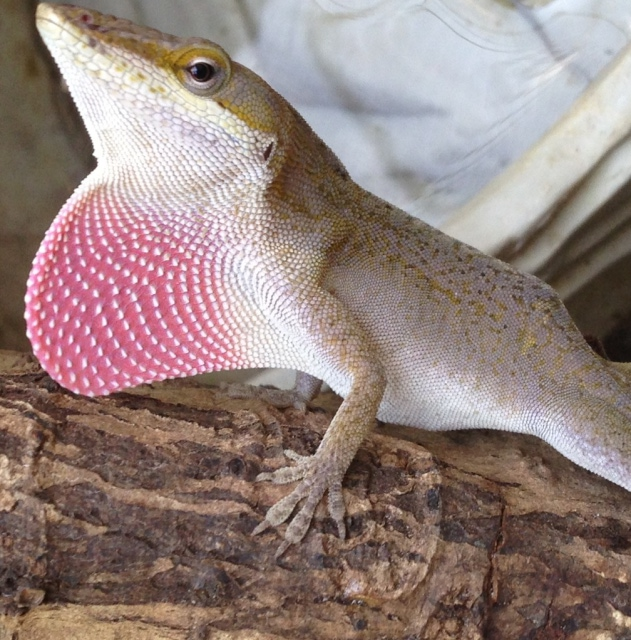QuestionI think my new aquatic turtle is sick- what are the signs? Is there anything I can do for him so that he does not die? I put him in a new tank with the other 3 turtles that we bought in Hitlon Head Island this week. Please email me asap so I can help him. Thanks so much!
AnswerAquatic turtles (generally, they are semi-aquatic of course, not fully aquatic) are animals that require a great deal more equipment and care than most people are aware of, or are prepared to provide. They are often impulse purchases, unfortunately, and owners who buy a book on their care, read up, and set up the equipment to keep them before they are actually purchased, are quite rare.
Keeping 4 turtles in a tank is usually out of the question. To be kept in a tank, the size should be about 10 gallons per inch of shell length. In the United States, it is illegal to sell turtles as pets until they are at least 4 inches long (though some do so illegally). Turtles reach this length within a year, with proper care. Obviously 4 four-inch-long turtles would require a 160 gallon tank....and they would outgrow it in months, since they are far from full-grown. Assuming they are red-eared sliders, your turtles will grow to an adult length of 8 to 13 inches (depending on gender--males are 8 to 10 inches, females 10 to 13). That would mean they would EACH require a 120 gallon tank. They will reach that size probably by age 4 or 5. Their lifespan is 20 to 50 years, so a substantial investment into their care is not unreasonable.
Tanks are very heavy, and very difficult to clean...the result of that, is that people who keep turtles in them usually fail to clean them as often as they require (which is, whenever they smell of ammonia, much less when they look visibly dirty. They should have water changes twice a week, and be disinfected monthly, even when excellent filtration is used). The result of this is that the turtles readily fall ill due to infection, stress, improper heat or light, or inadequate diet--usually a combination of things.
I do have to let you know, unfortunately, that you have made a serious mistake. Your new turtle may have been ill when you got it...reptiles are susceptible to a variety of viral, bacterial, fungal, and parasite infections, like most animals. Now, all 3 of your other turtles have been exposed to it, since you did not quarantine the new animal. As a result, if the illness is not treatable, you may lose all of them.
However, most turtle ailments are treatable. Not at home, of course--they will require veterinary attention to diagnose the problem, and provide correct treatment. Infections require antibiotics, parasites require worming drugs suited to the type of parasite, etc.
Your first step should be to contact a veterinarian who has reptile experience, and bring your sick turtle in for a checkup, promptly.
Your second step should be to purchase a book on care for the species of turtles you have, and read a variety of online care sheets on the subject. At this point, you may either discover that you cannot actually afford to keep these animals, or you will have to open your wallet rather wide to purchase proper setups for them. I do not recommend keeping 4 of them together in one enclosure, anyhow. Keeping even 2 animals together can be problematic at times, and you would essentially need a pond to keep them all in one area. Reptiles are solitary animals, and view cage-mates as competition. Smaller, subordinate animals are stressed, and do not get adequate food. In the wild, smaller animals can leave the area and seek resources elsewhere.
If you do find that purchasing proper equipment for the turtles, or providing vet care, is impossible, then you should give them up to a reptile rescue group, experienced turtle keeper, or shelter, immediately, before they all become ill due to neglect, or the sick one dies. By the time a reptile shows signs of illness, it is usually seriously ill, and treatment must be provided promptly.
Just as with the 'free puppy', there is no such thing as a free turtle. People may pay $10 or even less for the turtle, without realizing that it requires $200 for the basics to keep it alive.
The new products sold by companies like Waterland Tubs are a good alternative to tanks for turtle-keeping, and are much easier to clean and maintain. Baby turtles can be kept in plastic Rubbermaid or Sterilite containers--but they always must have the dry basking area with easy access, heat lamp, and UVB light source.
Gone are the days when hatchling turtles were doomed to die slowly over the course of a few months in tiny plastic enclosures with a little palm tree in them. Now, all of the equipment needed to keep turtles healthy and happy is readily available in most pet stores (though diet should be mostly fresh foods, and pellets should make up only 25% of it). Veterinary care has also improved, and more vets are doing research on reptile medicine, and are able to provide proper treatment for them.
With 4 turtles, you should give serious thought to constructing an outdoor enclosure for them, with a large filtered pond, so that they can get natural sunlight have more room. Turtles aren't exactly suitable house pets, though some choose to keep them that way.
If it turns out that you're a minor, and your parents cannot provide the proper equipment, or afford vet care...always remember the saying: If you cannot afford the vet, you cannot afford the pet. You will have to do the right thing, and give them up. It is illegal to let pets suffer and die due to lack of veterinary care or proper housing.

 Eastern Collared Lizard
Question
Leroy
I have a 5 yr. old lizard and last night
Eastern Collared Lizard
Question
Leroy
I have a 5 yr. old lizard and last night
 Worried About Leopard Gecko
Question
Yoshis problem
Hi, Yexalen
I have a juvenile
Worried About Leopard Gecko
Question
Yoshis problem
Hi, Yexalen
I have a juvenile
 how do you tell if a F Uro is gravid?
Questiongravid or just fat?
QUESTION: Ive had my
how do you tell if a F Uro is gravid?
Questiongravid or just fat?
QUESTION: Ive had my
 Green Anole Spine Injury
QuestionQUESTION: I have an adult male green anole liza
Green Anole Spine Injury
QuestionQUESTION: I have an adult male green anole liza
 wild/not so wild green and brown anoles
Question
lizards "Pheobe"
Dear M
wild/not so wild green and brown anoles
Question
lizards "Pheobe"
Dear M